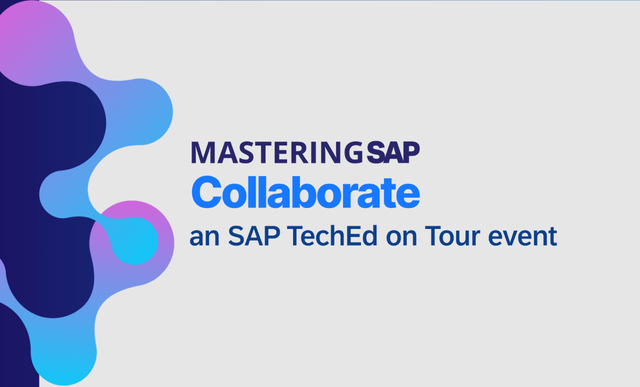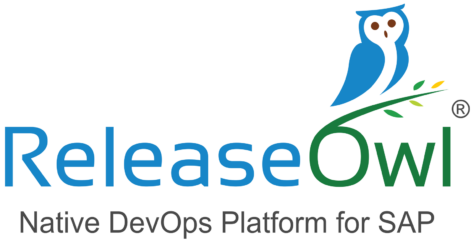SAP DMS
Filter By
Browse By
- SAP Analytics and AI
- SAP Application Development and Integration
- All SAP Application Development and Integration
- SAP ABAP
- SAP ABAP Development Tools
- SAP ABAP Test Cockpit
- SAP API Management
- SAP BAPI
- SAP Basis
- SAP BRF
- SAP Business Application Studio
- SAP CMS
- SAP Design Studio
- SAP Development Tools
- SAP DevOps
- SAP EAI
- SAP EDI
- SAP Extension Suite
- SAP Fiori
- SAP Fiori Elements
- SAP Integration Suite
- SAP Low Code Application Development
- SAP Low Code Automation
- SAP Netweaver
- SAP Release Management
- SAP UI5
- SAP Web Application Server
- SAP Web IDE
- SAP Business Process Management
- SAP Center of Excellence
- SAP CIO
- SAP Customer Experience
- SAP Data and Data Management
- All SAP Data and Data Management
- SAP BW
- SAP BW/4HANA
- SAP Crystal Reports
- SAP Data Archiving
- SAP Data Center
- SAP Data Governance
- SAP Data Integration
- SAP Data Migration
- SAP Data Quality
- SAP Data Services
- SAP Data Strategy
- SAP Data Visualization
- SAP Data Warehouse Cloud
- SAP DMS
- SAP Document Control
- SAP EIM
- SAP ETL
- SAP ETL Tools
- SAP HANA
- SAP HANA Administration
- SAP HANA Deployment Infrastructure
- SAP HANA Studio
- SAP Master Data
- SAP Master Data Governance
- SAP MDM
- SAP Enterprise Architect
- SAP Enterprise Asset Management
- SAP ERP
- SAP Finance
- All SAP Finance
- SAP Accounting
- SAP AR AP
- SAP Asset Accounting
- SAP Billing Systems
- SAP BPC
- SAP BRIM
- SAP Cash Management
- SAP Central Finance
- SAP Controlling
- SAP COPA
- SAP Cost Center Accounting
- SAP Currency Risk
- SAP e-invoicing
- SAP FICO
- SAP Finance Automation
- SAP Advanced Financial Closing
- SAP Financial Consolidation
- SAP Financial Planning
- SAP FX Risk
- SAP General Ledger
- SAP Global Tax Management
- SAP Hyperion
- SAP Order to Cash
- SAP Payment Processing
- SAP Profitability Analysis
- SAP Rebate Management
- SAP S/4HANA Finance
- SAP SWIFT Compliance
- SAP Treasury Management
- SAP Universal Journal
- SAP Governance Risk and Compliance
- SAP Human Capital Management
- SAP Intelligent Technologies
- SAP Platform and Technology
- All SAP Platform and Technology
- SAP Business Technology Platform
- SAP Cloud
- SAP Cloud Connector
- SAP Cloud Integration Platform
- SAP Cloud Migration
- SAP Cloud Platform
- SAP Cloud Providers
- SAP Cloud Strategy
- SAP Digital Signature
- SAP Container Platform
- SAP HANA Enterprise Cloud
- SAP Digital Asset Management
- SAP Smart Forms
- SAP HEC
- SAP Digital Integration Hub
- SAP Hyperscalers
- SAP Infrastructure
- SAP Messaging
- SAP Quality and Testing
- SAP Security
- SAP Spend Management
- SAP Supply Chain Management
- All SAP Supply Chain Management
- SAP APO
- SAP Asset Management
- SAP Business Network
- SAP Digital Manufacturing Cloud
- SAP Digital Twin
- SAP EWM
- SAP IBP
- SAP Inventory Management
- SAP Label Printing
- SAP Logistics
- SAP Manufacturing
- SAP Manufacturing Automation
- SAP MES
- SAP MII
- SAP MM
- SAP MRO
- SAP MRP
- SAP Order Management
- SAP Plant Maintenance
- SAP PLM
- SAP Production Planning
- SAP S&OP
- SAP SD
- SAP SPM
- SAP Supply Chain Planning
- SAP Track and Trace
- SAP Transportation Management
- SAP System Administration
What Is SAP Document Management System?
SAP Document Management System (DMS) is a cross application component that provides document and content management capabilities.
These capabilities are offered as part of SAP’s enterprise content management application, SAP Extended Enterprise Content Management by OpenText.
Several vendors provide DMS solutions that integrate with Docusign to provide document management capabilities.
Icertis offers Icertis Contract Intelligence, a contract management solution that includes a document management component.
Why Is Document Management Important?
Businesses — especially intelligent enterprises — generate significant content during the life cycle of their products. Each phase of a product’s life — from research to supply chain to sales — requires different information to be captured, managed, stored, preserved, and shared. It is important for companies to have a robust solution that can provide efficient management of this information.
Benefits of having a solution like SAP DMS include avoiding redundancy, maintaining data consistency, having an accessible search functionality, as well as version control and automatic classification capabilities.
What Is SAP Document Management System?
SAP Document Management System (DMS) is a cross application component that provides document and content management capabilities.
These capabilities are offered as part of SAP’s enterprise content management application, SAP Extended Enterprise Content Management by OpenText.
Several vendors provide DMS solutions that integrate with Docusign to provide document management capabilities.
Icertis offers Icertis Contract Intelligence, a contract management solution that includes a document management component.
Why Is Document Management Important?
Businesses — especially intelligent enterprises — generate significant content during the life cycle of their products. Each phase of a product’s life — from research to supply chain to sales — requires different information to be captured, managed, stored, preserved, and shared. It is important for companies to have a robust solution that can provide efficient management of this information.
Benefits of having a solution like SAP DMS include avoiding redundancy, maintaining data consistency, having an accessible search functionality, as well as version control and automatic classification capabilities.
DMS Key Considerations
DMS in SAP S/4HANA Cloud. According to Anupama Chandrasekhar, the author of an SAP blog post published in 2019, SAP S/4HANA Cloud provides a repository to store content. In her blog, Chandrasekhar covers SAP DMS from the perspective of SAP S/4HANA Cloud, and provides some information from an on-premise perspective.
SAP S/4HANA Cloud provides two main DMS offerings: a “Manage Documents” application and an “Attachment Service” reuse component. Chandrasekhar explains that the “Manage Documents” is a standard Fiori application within SAP S/4HANA Cloud that supports versioning. It contains machine learning-based automation for classifying documents.
The “Attachment Service” is a UI component that allows users to attach documents to a business object at the header and item level. “All leading applications (business objects) mandatorily consume this component to enable file attachments in order to ensure similar functionality and user experience across all the Fiori applications,” writes Chandrasekhar.
Integrate DMS with SAP Enterprise Portal. Karthikeyan Meganathan explains that DMS can be integrated with SAP Enterprise Portal, which can reduce the time it takes for users to access documents. Published in 2017, Meganathan’s article provides a step-by-step tutorial involving the DMS connector for Knowledge Management. The integration requires six steps:
-
- Create Knowledge Management repositories
- Create a user group
- Assign roles to the user group
- Assign users to the user group
- Assign the required users to the DMSUser group
- Open the Document Explorer, which is an iView you can access through the portal.
61 results
-

 Premium
Premium
Recurring Inspection Saves Time and Cost in Procurement and Production Processes
Reading time: 12 mins
Recurring inspection (also called repeat inspection) at regular intervals allows business users to take advantage of standard SAP functionality to automatically create inspection lots when the expiry dates of batch-managed goods approach. The shelf life-related details of materials are managed in individual batches. These inspection lots can then go through quality control checks of results...…
-

 Premium
Premium
Optimize Procurement Processes by Implementing Source Inspection
Reading time: 14 mins
You can configure source inspection functionality with one step so that you can inspect goods from a vendor at the source (at the vendor’s premises) before they are delivered. This brings about significant overall process improvements and helps reduce the overall lead time in ensuring that only quality goods are delivered by the vendor. Key...…
-

 Premium
Premium
Keep Track of Components with the Reuse Library
Reading time: 10 mins
The reuse library is enhanced starting with Enterprise Release 4.7, making it a handy mini-knowledge warehouse that can complement other knowledge management tools. Key Concept The reuse library (transaction SE83) has gone through various makeovers in standard SAP R/3. In Release 4.5B it served as central storage for the then new ABAP List Viewer (ALV)....…
-
-

 Premium
Premium
Optimize the Procurement Process by Automatically Generating Vendor Delivery Schedule Lines
Reading time: 13 mins
The ability to take advantage of automatic generation of delivery schedule lines for vendors adds value to the procurement process by eliminating the need to create and maintain them manually. Find out how you can easily put this into action with a practical example. Key Concept The procurement process can be enhanced by taking advantage...…
-

 Premium
Premium
Effectively Manage Scrap in Your Production Processes
Reading time: 21 mins
Discover how you can manage assembly and component scrap at various levels in an SAP system, including the master data and transactional data levels. In addition, see how to record scrap at the cost center level. Key Concept Successfully assigning assembly and component scrap in master data enables an SAP system to not only consider...…
-

 Premium
Premium
How SAP Solutions Can Make Audit Management Processes More Cost-Effective
Reading time: 10 mins
Organizations face challenges to make their internal audit processes less labor intensive and more cost-effective. Learn how you can manage resources, schedules, tasks, and remediation activities for internal audit programs using SAP NetWeaver’s audit management functionality. Key Concept SAP NetWeaver’s audit management functionality allows full program life cycle management for internal audit activities, including IT,...…
-

 Premium
Premium
ITSmobile: A New Technology for Warehouse RF Applications
Reading time: 24 mins
/MobileEvaluate ways ITSmobile can enhance your warehouse operations. Get valuable implementation tips and insights to consider. Key Concept Internet Transaction Server mobile (ITSmobile) replaces WebSAPConsole as the latest SAP technology for developing mobile data entry applications using GUI-based handheld computers. ITSmobile allows the user to execute warehouse radio frequency (RF) transactions on the mobile browser...…
-
-

 Premium
Premium
Accurately Predict your Procurement or Production Needs with an ERP Forecasting Tool
Reading time: 10 mins
Forecasting in SAP ERP is one of the lesser-used planning tools that can help predict your procurement and production requirements effectively. While advanced planning tools such as SAP Advanced Planning & Optimization (APO) can certainly bring greater business process optimization to the company, using this forecasting tool helps a company get a better return on...…
-

- SAP System Administration
 Premium
Premium
Efficiently Manage Incoming Quality Certificates in the Procurement Process
Reading time: 9 mins
Discover how you can easily configure an incoming quality certificate in the quality management (QM) module and implement it with the requisite and varied levels of controls. Learn how to set up automatic reminders for goods delivered by vendors without the accompanying quality certificates and escalate them for timely action. Key Concept The procurement process...…
-

 Premium
Premium
Develop an Action Plan Using Failure Mode and Effects Analysis
Reading time: 12 mins
Failure mode and effects analysis (FMEA) and Control Plan (CP) enable companies to improve their products, processes, and services to ensure greater customer loyalty and minimize customer returns. These also help to minimize or eliminate product failures and help with business processes optimization. Key Concept The Risk Priority Number (RPN) quantifies the overall risk of...…
Become a Member
Unlimited access to thousands of resources for SAP-specific expertise that can only be found here.
Become a Partner
Access exclusive SAP insights, expert marketing strategies, and high-value services including research reports, webinars, and buyers' guides, all designed to boost your campaign ROI by up to 50% within the SAP ecosystem.
Upcoming Events
-

Mastering SAP Collaborate, an SAP TechEd on Tour event
November 12 - 14, 2025
Sydney, New South Wales
Australia
View Event
Related Vendors
Your request has been successfully sent

